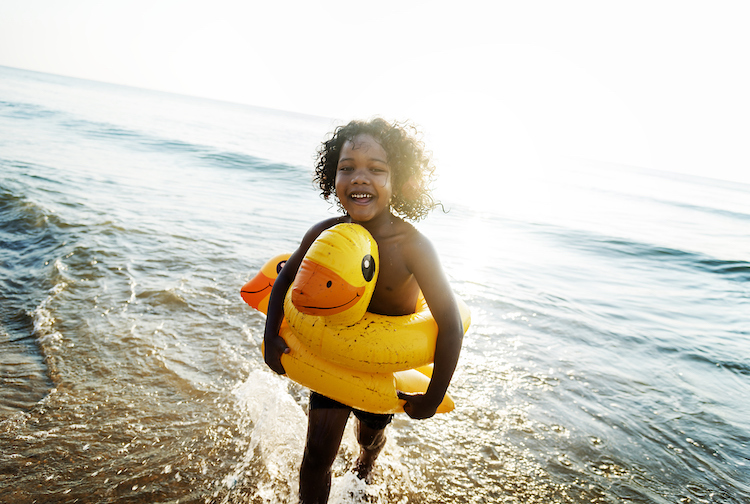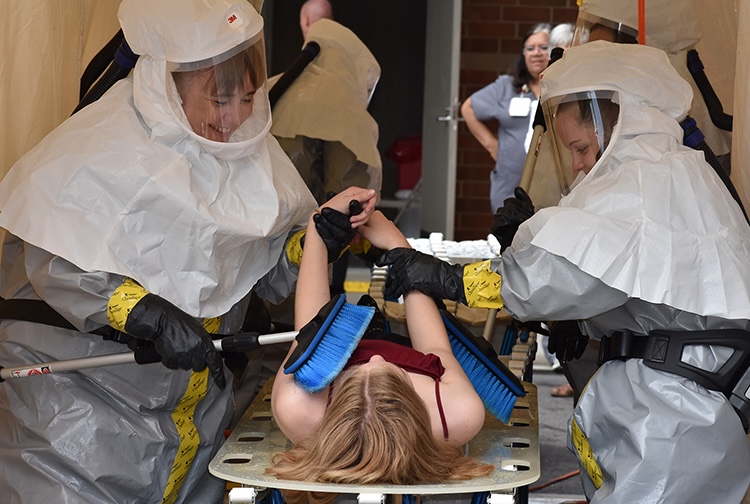
What to know about waterborne pathogens
Avoid infections while visiting rivers and lakes with these helpful tips from a VCU College of Health Professions expert.
July 31, 2023 (Getty Images)
(Getty Images)
By Jayla Parker
For most, the ideal way to cool down on a hot summer day is to take a dip in the river or lake. Within those waters live more than just fish, frogs and copious plants.
Some bodies of water have microorganisms called pathogens that can cause people and animals to get sick. Waterborne pathogens can include bacteria, viruses and parasites, among others.
“The most common kinds of pathogens found in freshwater include Crytosporidium, Cyclospora cayetanensis, Giardia, Naegleria fowleri, and pathogenic strains of E. coli,” said Melissa Jamerson, PhD, Chair and Associate Professor of Immunology and Immunohematology in Virginia Commonwealth University’s College of Health Professions.
As part of our Summer Safety Series, Jamerson tells VCU Health News how to avoid pathogens as you enjoy being in the refreshing water.
How can pathogens make people sick?
Research confirms that pathogens infect our bodies by entering through mouth, eyes, nose, urogenital openings, or through wounds or bites that breach the skin barrier and can spread by several routes.
Similar to any other type of virus or infection, the symptoms you may experience vary depending on the pathogen that enters your body.
Symptoms can be mild when it comes to pathogens such as E. coli, Giardia and Cryptosporidium. All of these can cause diarrhea, stomach cramps, loss of appetite, weight loss, nausea/vomiting, gas and dehydration.
On the other hand, pathogens like Naegleria fowleri can cause a very severe infection that affects the central nervous system. Symptoms begin with headache, fever, nausea, or vomiting and can later result in stiff neck, confusion, loss of balance, seizures and hallucinations.
Naegleria fowleri is known for almost always being fatal, typically infecting 2-3 people in the United States each year, but all pathogens have the potential to become deadly without the proper diagnosis and treatment.
That is one of the many reasons why it’s extremely important to visit your doctor as soon as you’re experiencing anything out of the ordinary with your body. For pathogens specifically, your doctor should be able to treat you with antibiotics, anti-protozoal agents and/or anti-fungal agents.
What about pets? What are some signs and symptoms pet owners should be aware of?
Pets can be infected by pathogenic strains of E. coli, Giardia and Cryptosporidium. Symptoms would be similar to what we see in humans, including vomiting, diarrhea, gas, loss of appetite, dehydration and decreased energy.
Looking at the Richmond region, what pathogens have been found in the James River?
Like in all rivers, the James River is home to a variety of bacteria including E. coli which is consistently being monitored by the James River Association’s program, James River Watch. This program shares the results of monitoring the levels of E. coli through an interactive map.
Other pathogens found in the James River can include Naegleria fowleri due to the attraction of warm water, and the intestinal parasites, Giardia and Cryptosporidium, due to the water containing animal waste.
How can I prevent getting sick from pathogens when swimming?
For pathogenic E. coli, Giardia and Cryptosporidium you can prevent infection by simply not ingesting the contaminated water.
Medical experts highly recommend paying close attention to children when they’re swimming or playing. As adults we typically do not consume water when we swim but kids are much more likely to swallow water by accident.
Kids are also more likely to get water up their nose, which is how Naegleria fowleri often enters the body. To prevent this infection, you need to prevent water from entering your nose by using nose plugs, pinching your nose or keeping your head above the water.



